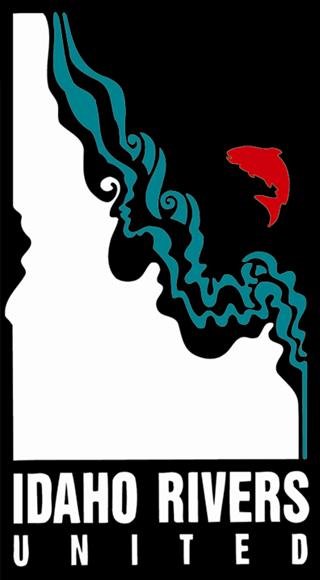A Day of Victory as the EPA blocks Pebble Mine in Bristol Bay
On January 30th, 2023, the U.S. Environmental Protection Agency (EPA) announced that it has vetoed Pebble Mine, making a historic decision for salmon conservation in America, as Tribes and environmentalists have said for over 20 years that “this mine would do irreparable damage to one of the most valuable salmon runs in the world.”
According to the New York Times, Michael Regan, the administrator of the E.P.A., said the decision came after an extensive review of scientific and technical research. “We’re committed to making science-based decisions within our regulatory authority that will provide durable protections for people and the planet,” Mr. Regan said. “And that’s exactly what we’re doing today.”
Bristol Bay in Alaska, which is a 20 million acre watershed, is home to half of the world’s sockeye salmon runs, last year totaling over 70 million fish, creating 15,000 jobs, and a $2.2 billion economy and way of life to 31 tribes, according to EPA.gov.
According to the Washington Post, the EPA may have put “the final nail in the coffin,” to finally stop Pebble Mine in over a 20 year battle for environmentalists. The Biden Administration has formally restricted mining here in one of the world’s largest salmon runs, specifically by using the Clean Water Act (“404(c)”) protections to safeguard the headwaters of Alaska’s Nushagak and Kvichak Rivers.
This use of the 404(c) restrictions within the Clean Water Act is quite rare and has been utilized by the EPA and Army Corp of Engineers only three times in the past 30 years, and only 13 times since the creation of the CWA itself. Section 404(c) grants the EPA the authority to limit activities associated with the disposal of mine waste and tailings (dredge or fill material) into the waters of the United States that would have an adverse effect on “fishery areas (including spawning and breeding areas),” among other possible considerations.
As we look to Idaho and what this news means for our work, we are cautiously optimistic that a similar opinion may also be applied to the South Fork of the Salmon and the proposed Stibnite Gold Project along with other mining projects that will adversely impact critical salmon habitat throughout the state.
According to the Washington Post, “in Congress, Sen. Maria Cantwell, D-Wash., emerged as a vocal mine opponent who urged the Obama administration to use the Clean Water Act’s 404(c) section to block the mine. Cantwell, in an interview, called this one of the biggest environmental battles of her Senate career.” Cantwell is also an important elected leader in our campaign to remove the four Lower Snake River dams.
Pebble Mine is a giant, low-grade, copper mine that was proposed to be located on the headwaters of the Bristol Bay watershed. The deposits lie under the South Fork Koktuli River, North Fork Koktuli River, and the Upper Talarik Creek watersheds, all of which drain into some of the largest rivers in the entire Bristol Bay watershed—the Nushagak and Kvichak Rivers. The EPA found that discharging pollutants into these waters to access the mineral deposits would have been unavoidable.
Map credit: EPA via Washington Post
As climate change continues to put increased pressure and stress on critical habitat for salmon and other threatened and endangered species, the importance of this decision and the precedent sets will only increase. As the perceived need for increased mineral extraction grows within the United States, we must balance this perceived need against the real risks that large industrial mines pose and finally take the long-called-for steps to meaningfully reform mining legislation to allow for this balanced approach.
This precedent of protecting salmon and the watersheds on which they depend on from mining projects demonstrates the need for America’s mining laws to evolve. When looking at the many mining projects posing a threat to world-class watersheds across the nation, there is hope that similar protections could be granted to these critical areas.
The EPA has made the commendable decision to safeguard Bristol Bay’s world-class salmon spawning grounds, choosing the health of the watershed over the destruction that accompanies an extractive industry like mining.
In the case of the Snake River Basin’s salmon and steelhead, miles of pristine river habitat in Central Idaho that once supported millions of returning fish remain largely empty. The campaign to remove the four Lower Snake River dams in order to restore Idaho’s wild salmon runs to harvestable, abundant levels can take hope and incentive from the decision in Bristol Bay. When our elected leaders utilize science and listen to communities that depend on healthy fisheries and rivers, salmon may once again fill their role as the cultural, ecological, and economic icons of the Northwest.
This news comes off the tail of other significant environmental protections across the country. In the past week, the Biden Administration has protected over 200,000 acres in the Boundary Waters Canoe Area and watershed in northern Minnesota for the next 20 years, which blocked a copper and nickel mine. The current administration also overturned a Trump-era ruling to protect the Tongass National Forest in Alaska from extensive logging.
This excellent news gives us hope for our work in salmon conservation and mining reform. Congratulations to all of our partners, fellow organizations, and people worldwide who spoke up and took action on this issue. We see this moment as an incredible example of successful grassroots advocacy and citizen action.
We are reminded that we must never forget the power of our collective voices – and most importantly to NEVER GIVE UP.




